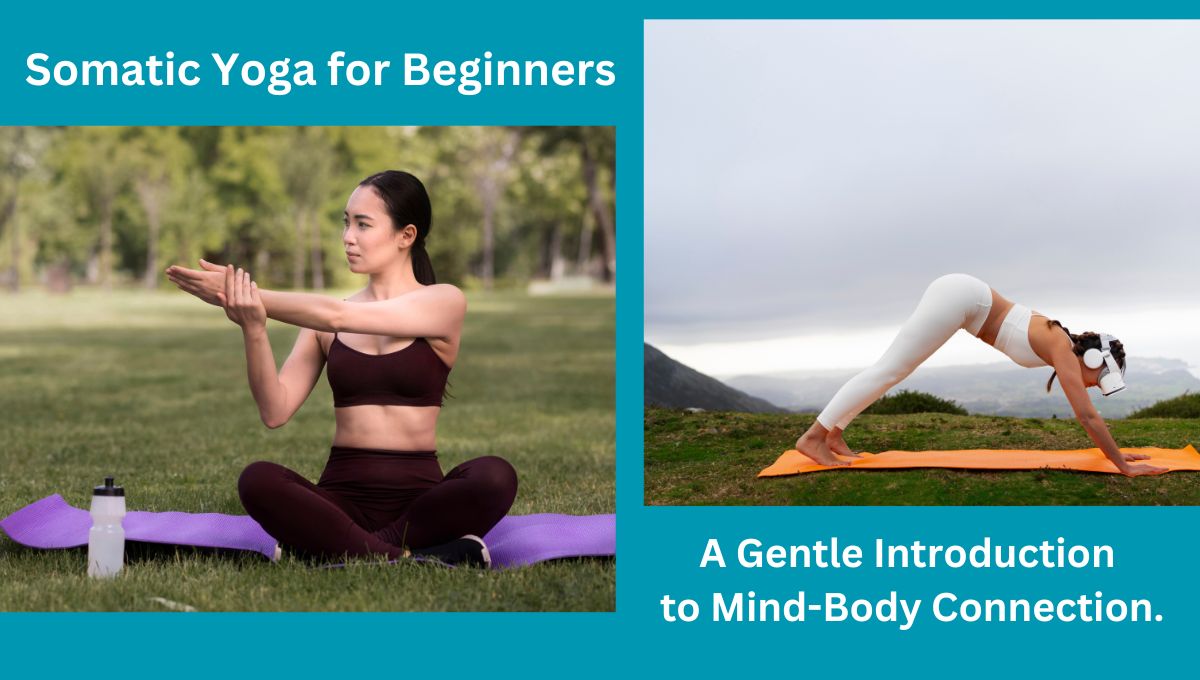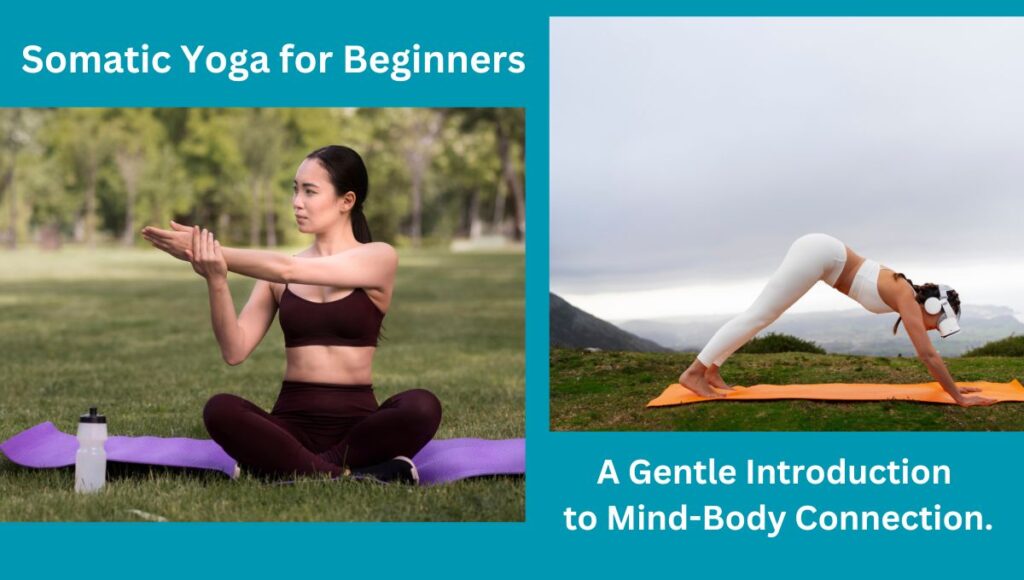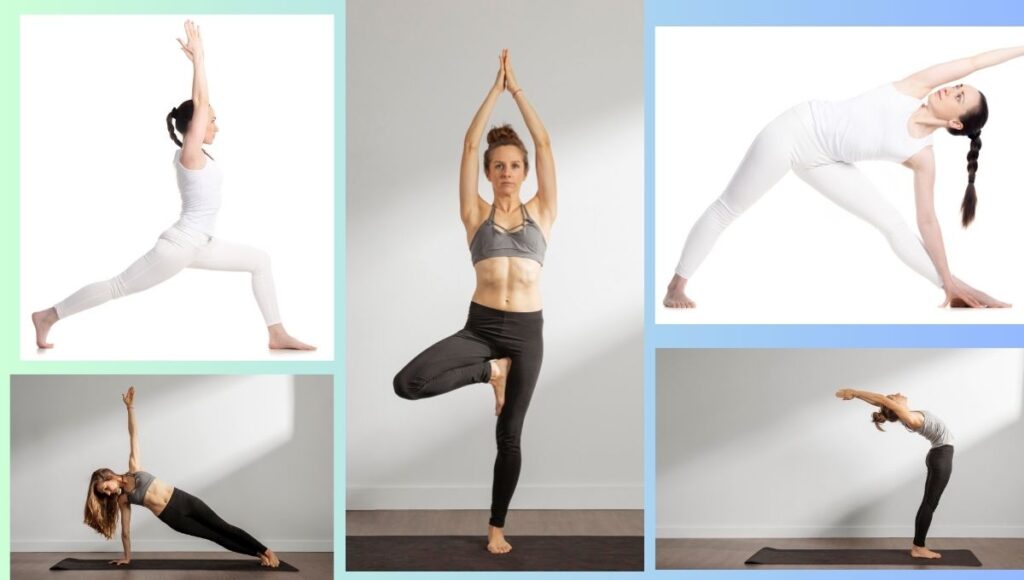Somatic Yoga for Beginners: A Gentle Introduction to Mind-Body Connection.
Introduction to Somatic Yoga
Somatic Yoga is an innovative approach that combines traditional yoga with somatic movement principles. This practice aims to enhance your awareness of the mind-body connection. It is especially beneficial for beginners or individuals looking for a gentle yet impactful yoga practice. If you’ve been curious about trying yoga but feel overwhelmed by complicated poses or intense yoga styles, Somatic Yoga could be a great starting point.
What Is Somatic Yoga?
Somatic Yoga is a distinctive practice that focuses on slow, mindful movements paired with deep, conscious breathing. Unlike traditional yoga, which often prioritizes achieving the perfect posture, Somatic Yoga encourages individuals to pay attention to their body’s sensations and movements, enabling them to explore how their body feels rather than how it appears. This practice is based on the concept that through mindful movement, one can release tension, enhance mobility, and improve overall well-being.
The Origins of Somatic Yoga
The Influence of Thomas Hanna
Somatic Yoga is heavily influenced by the work of Thomas Hanna, a significant figure in the field of somatic. Hanna introduced the concept of “somatic” which refers to experiencing the body from within. His work emphasized the importance of self-awareness in movement and how it can lead to profound changes in the body. Somatic Yoga incorporates these principles, focusing on internal experiences rather than external appearances.
Differences Between Somatic Yoga and Traditional Yoga
Traditional yoga usually focuses on strength, flexibility, and achieving specific poses. In contrast, Somatic Yoga prioritizes the journey over the destination. The movements are slow and deliberate, encouraging practitioners to listen to their bodies and move in natural and comfortable ways. This approach makes Somatic Yoga a great option for beginners who might feel intimidated by the more intense demands of other yoga styles.
Why Somatic Yoga Is Perfect for Beginners?
Gentle Approach to Movement
Somatic Yoga is great for beginners because of its gentle approach. The movements are slow, deliberate, and mindful, which helps prevent injury and allows you to ease into the practice. This gentleness is especially beneficial for those with physical limitations or who are recovering from injuries..
Focus on Mind-Body Awareness
Somatic Yoga emphasizes the mind-body connection. Rather than concentrating on the outward appearance of poses, this practice promotes being present in the moment and paying attention to the sensations and movements within your body. This increased awareness can bring about a better understanding of how your body moves and responds, fostering a more intuitive and connected practice.
The Benefits of Practicing Somatic Yoga
Enhancing Body Awareness
Somatic Yoga offers the significant benefit of enhancing body awareness. By slowing down and focusing on how your body feels during each movement, you become more attuned to your physical self. This increased awareness can help you identify areas of tension, imbalance, or discomfort, allowing you to address them more effectively.
Reducing Stress and Anxiety
The slow, intentional movements of Somatic Yoga, combined with deep breathing, create a calming effect that can significantly reduce stress and anxiety. This practice encourages relaxation and promotes a state of mindfulness, helping you to stay grounded and present in the moment.
Improving Flexibility and Mobility
Though gentle in nature, Somatic Yoga can significantly improve flexibility and mobility. The emphasis on slow, controlled movements enables muscles to stretch and lengthen without strain, ultimately leading to increased ease of movement and reduced body stiffness over time.
Relief for Chronic Pain
Somatic Yoga is especially beneficial for individuals dealing with chronic pain. By focusing on how the body moves and feels, one can recognize and release tension patterns that may contribute to pain. This mindful approach to movement can provide long-term relief from discomfort and enhance overall body comfort.
Boosting Mental Clarity and Focus
The meditative aspects of Somatic Yoga, along with its focus on body awareness, can enhance mental clarity and focus. Regular practice can make it easier to concentrate, make decisions, and keep a calm, clear mind even in stressful situations.
The Core Principles of Somatic Yoga
Conscious Relaxation
Conscious relaxation is a key principle of Somatic Yoga. It involves intentionally releasing tension from the body to allow the muscles to relax deeply. Practicing conscious relaxation can help reset the nervous system and promote a sense of calm and well-being.
Slow, Mindful Movements
Unlike more dynamic forms of yoga, Somatic Yoga focuses on slow, mindful movements. These movements are designed to be gentle and controlled, giving you the time to fully experience each motion and the sensations it creates in your body.
Sensory Awareness
Being mindful of sensory sensations involves paying attention to the physical feelings in your body. In Somatic Yoga, you are urged to observe how your body feels with each movement, which can help you establish a stronger bond with your physical self.
Non-Judgmental Awareness
In Somatic Yoga, practitioners are encouraged to cultivate nonjudgmental awareness, which involves observing the body and its movements without criticism or comparison. This approach aims to promote self-acceptance and enables individuals to embrace their bodies as they are, nurturing a positive and compassionate relationship with themselves.
Getting Started with Somatic Yoga
What You Need to Begin
Comfortable Clothing
When beginning your Somatic Yoga practice, it’s crucial to don comfortable, loose-fitting attire that enables unrestricted movement. Avoid anything overly tight or constrictive, as these can impede your ability to move and breathe freely.
Create a peaceful environment
Select a tranquil space where you can engage in your practice without disturbances. This could be a dedicated room within your home or a serene corner where you can unfurl your mat and concentrate on your yoga session.
Basic Props
While Somatic Yoga doesn’t require much equipment, a few basic props can enhance your practice. A yoga mat provides cushioning for your joints, while a blanket or bolster can offer additional support for certain poses.
Key Somatic Yoga Poses for Beginners
Arch & Flatten
The Arch & Flatten is a foundational somatic movement that helps to release tension in the lower back and improve spinal mobility. To perform this movement, lie on your back with your knees bent and feet flat on the floor. Slowly arch your back by tilting your pelvis forward, then flatten your back by tilting your pelvis backward. Move slowly and focus on the sensations in your lower back.
The Side Bend
The Side Bend helps to stretch the muscles along the side of your body, improving flexibility and relieving tension. Begin by standing or sitting in a comfortable position. Slowly reach one arm overhead and gently bend to the opposite side, feeling the stretch along your side. Return to the center and repeat on the other side.
The Pelvic Tilt
The Pelvic Tilt is another simple movement that helps to release tension in the lower back and improve pelvic mobility. Lie on your back with your knees bent and feet flat on the floor. Slowly tilt your pelvis upward, then lower it back down. Focus
Related Articles




